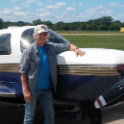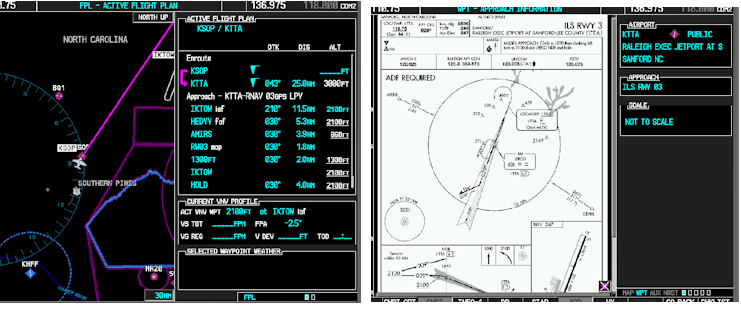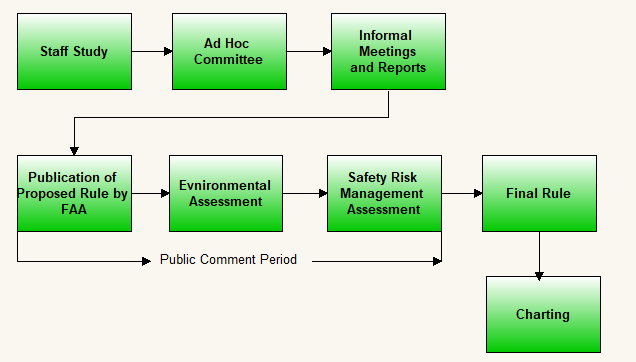-
Posts
4,145 -
Joined
-
Last visited
-
Days Won
14
Content Type
Profiles
Forums
Blogs
Gallery
Downloads
Events
Store
Everything posted by midlifeflyer
-

WiFi Vs Cellular Tablets for EFB
midlifeflyer replied to Lax291's topic in Miscellaneous Aviation Talk
I don’t recall that. When I bought my first iPad (Gen 1, 14 years ago), I recall the cost of the cellular upgrade and an external GPS puck to be roughly equivalent. (I decided on the puck rather than the cellular.) -
Well, it solves some of that. But when I do a complex transition for a VFR only pilot, we work on flying by the numbers. Obviously less of them, but they are still there.
-

Garmin G3x Touch Checklist / EFIS Files
midlifeflyer replied to Max Clark's topic in Avionics/Panel Discussion
I found the same thing. Paper is far more efficient for me. But I have seen pilots whose transition training included the use on the on-board checklists and it is very smooth and natural. That seems particularly true of Cirrus training. They mostly still use a flow and check, but the onboard checklist seems to avoid the common failure to to actually pause and read each item. Just not worth the effort for me. I have Goose too. Pretty much reserve it for when I'm teaching in airplanes I don't have my own paper checklist for. -
The problem there can be the time. I've been to several (my goal is a different airplane each time) and, about this time of year I put the ones I'd be interest in flying to in my calendar. But my experience is, most arrive around 8 am and a lot of food is gone by 9 or so. That means a very early wakeup time, which I usually reserve for American Airlines to the Caribbean
-

WiFi Vs Cellular Tablets for EFB
midlifeflyer replied to Lax291's topic in Miscellaneous Aviation Talk
When I made my first iPad purchase after seeing ForeFlight demoed, I decided I wanted to rely on an external GPS puck and went WiFi only. That was 14 years and 5 iPads ago. Every time I upgrade, I think, “should I get the cellular this time?” The answer has been “no.” I use my iPad for more than aviation. It’s become my travel “laptop” and, before retirement, I even used it in business meetings. It contains music, videos, even full movies. So far I haven’t missed cellular capability. WiFi availability has become more widespread. When I teach in owner airplanes, their avionics have some sort of position sharing capability, and I still carry a portable ADS-B device in my flight bag for those which don’t. -
Absolutely. But I don't worry about that when it comes to maps and charts since the map and chart display in the actual TSO avionics doesn't have any more operational status than your EFB - situational awareness only.
-
From GMU, I’d do a pretty mountain tour and have breakfast at the GMU Runway Cafe before or after. Or, still using the hills for scenery, head up toward the Crosswind Cafe at HKY.
-
Great point. People often don’t think of some others. And it’s not just about weather. I recently had an experience where I added one. I was departing from a nontowered airport in an unfamiliar area on an IFR flight. “Expected” clearance in hand, I departed VFR to pick up my clearance in the air. I can verify that during departure climb in busy airspace is not the best time to copy a different full route clearance! New personal minimum - get the clearance on the ground in an unfamiliar area, regardless of weather conditions.
-
I recently changed my takeoff minimums.. they were high - 800’. We were heading out a the ceiling was 600’. It was improving so we waited. When we took off into the 800’ overcast it was easy. Time to decrease it. that was it. Do something at or near the current personal minimum, see it was handleable, change it.
-
Kind of irrelevant to the discussion, but I flew with someone just recently who times every approach. He got into the habit at a way of not forgetting and it stuck with him. I stopped timing approaches after learning that the MAP is in the GPS even for a non-GPS approach. I figure if there was a widespread GPS failure and the only option was a VOR or LOC approach and the weather was anywhere near minimums, I'd be on my best behavior and remember to time it.
-
Remember that the timing table is just a basic Time = Distance/Rate. You could write your own. Since RNAV approaches have distance measurement, there is no timing table. For that matter, there is no timing table for an ILS either since the "MAP" is the DA, not a distance from the FAF.
-

Which remote Garmin ADSB to Legacy G1000
midlifeflyer replied to drstephensugiono's topic in Modern Mooney Discussion
As mentioned, not available. If you are not experienced with them, something to know about the G1000 generally. These are not add-on units in the sense of G5, GI275, G500 G3X, Aspen, Dynon, or other glass. Garmin issues a firmware or software or hardware upgrade and, if you got the dough you’re good to go. The G1000 OTOH is a system which is OEM and in which the airframe manufacturer has a huge say about content and updates and upgrades. The result is that an old G1000 might have very limited upgrade or update options. In most any type group, including this one, you can find posts complaining about this. And the excitement when one is overcome. Back on topic… like others, the one I see most is the 345R transponder. -
I love the cup holder. I don't put it away, but I do turn off my EFB when I don't currently want/need it for something. And techniques vary a lot in terms of what to display. All is good so long as it works for the pilot. I don't care either way enroute (when I often turn my EFB screen off), but personally, when flying an approach with a G1000, I prefer the MFD display on the left to the one on the right because of the clear depiction of "what's next?" both laterally and vertically. (FWIW, I think that "what's next?" anticipation is the single most perishable instrument skill.)
-
That’s interesting. That may be an another reason for my SOP continuing to use my EFB as my primary chart reference regardless of the equipment in the airplane.
-
Cool!
-

Making Sense of Best Glide and Glide Ratio
midlifeflyer replied to Max Clark's topic in Modern Mooney Discussion
THIS for me as well. Many years ago, I did a C172 checkout for a 20,000 hour retired airline pilot. When we got to the simulated engine failure, he was at best glide and heading toward a landing spot within 6 seconds. Once I realized what he was doing, I started to test it out with other airplanes. All he did was look out the window and pitch for the most familiar attitude - level cruise. Turned out that a level cruise attitude resulted in a speed close enough to best glide that the difference was inconsequential. So inconsequential that trying to be perfect has a negative impact. Even seems to account for weight. I’ve been using and teaching it ever since. I used that technique recently in an “impossible turn” demo. It wasn’t in a Mooney, but I’m linking it below anyway. Tweak if you need to with a touch of trim. If your autopilot has an IAS mode, use it. But only once underway to your landing area. -

GoPro setup as a cockpit voice recorder
midlifeflyer replied to Yourpilotincommand's topic in Avionics/Panel Discussion
I record audio separate from the camera. This is the digital recorder I am using now. https://www.amazon.com/gp/product/B07KBWN8L1/ In my case, my headset has an audio output jack, but I have also done it by plugging the recorder directly into a headset jack. (I’ve used the NFlight product. It works well, but the GoPros have a tendency (habit, actually) of overheating, so I gave up on them in favor of “cheap” knockoffs that actually work.) -
Yeah, the technique we were taught as student pilots often produces the same result.
-
As everyone has said, leaning ROP is based on the leanest/first-to-peak cylinder. Leaning LOP is based on the richest/last-to-peak cylinder. With Lean Assist systems the system compares all the cylinders during the process and identifies the first/last to peak and In some you can tell it you are trying fo ROP or LOP and it will show you the appropriate values. For most of us, once you know the value, you just go to it.
-
I’m not sure what you are asking. If you are referring to the PPS flight planning system, I’m not sure who here has used it.
-
For me, the event was so fast, so sudden, and so immediately catastrophic, that speculation has even less value than usual.
-

Proposed Modification to RSW Airspace
midlifeflyer replied to Paul Thomas's topic in Florida Mooney Flyers
...there have been a number of these. Nashville's (BNA) so-called "Super Charlie" (still round but bigger). For an interesting one conforming to the other airspace in the area, there's Fort Lauderdale (FLL). -

Proposed Modification to RSW Airspace
midlifeflyer replied to Paul Thomas's topic in Florida Mooney Flyers
I'm following the process at RDU. These changes can take several years. Like all airspace, it's regulatory. General description of the process is this. At the point you hear about it it's likely the beginning of the Ad Hoc Committee phase (unless you have missed a lot). You may have already received the invitation. If you want to get into the weeds, the full process is described in Order 7400.2R. -
Yeah, but that's Colorado where 10 miles visibility feels like IFR The worst "VFR" I ever saw there was returning from St Francis during the Hayman fire. Centennial was giving Special VFR clearances for people caught in the practice area.



